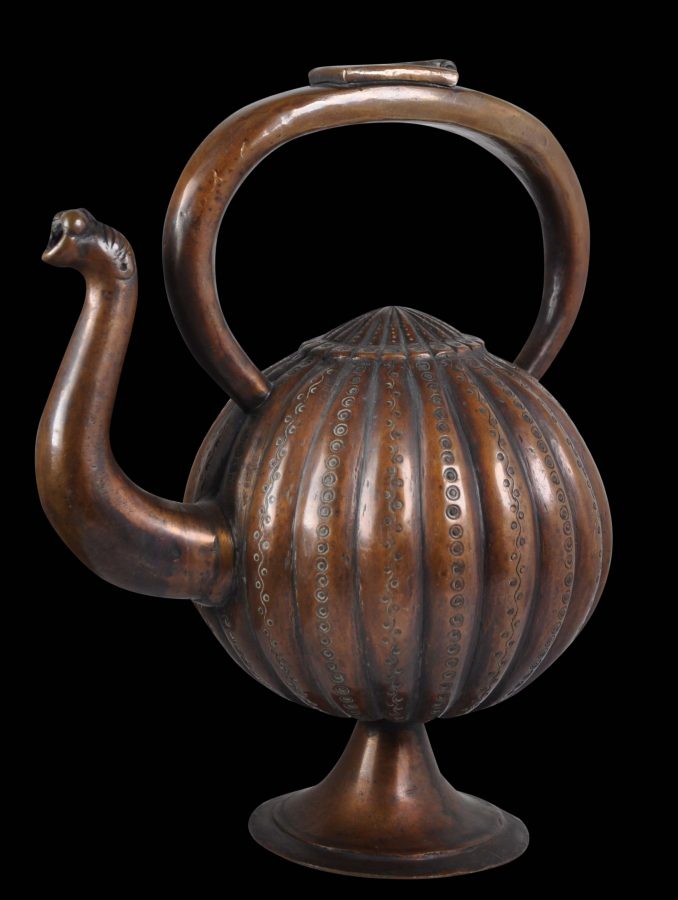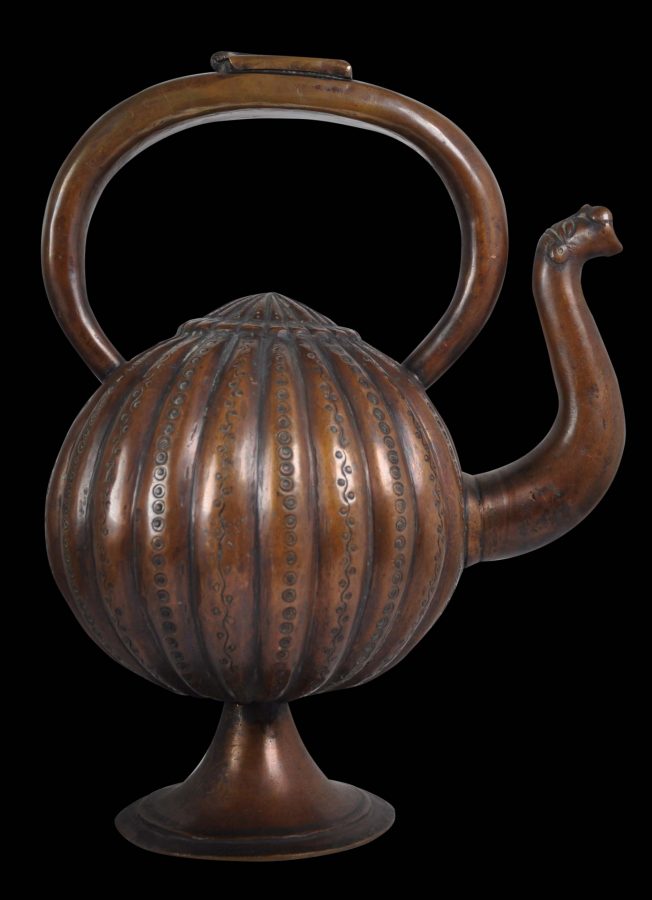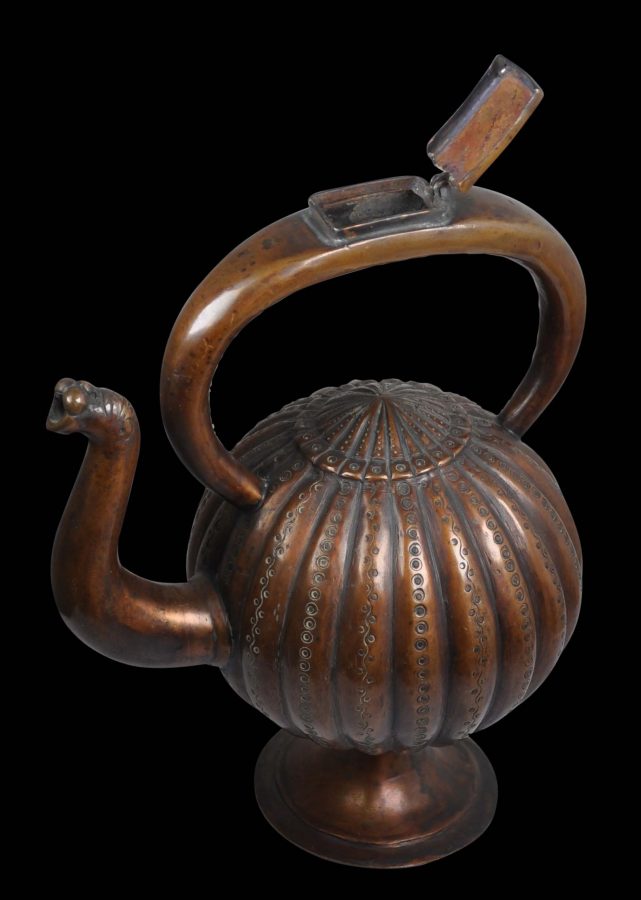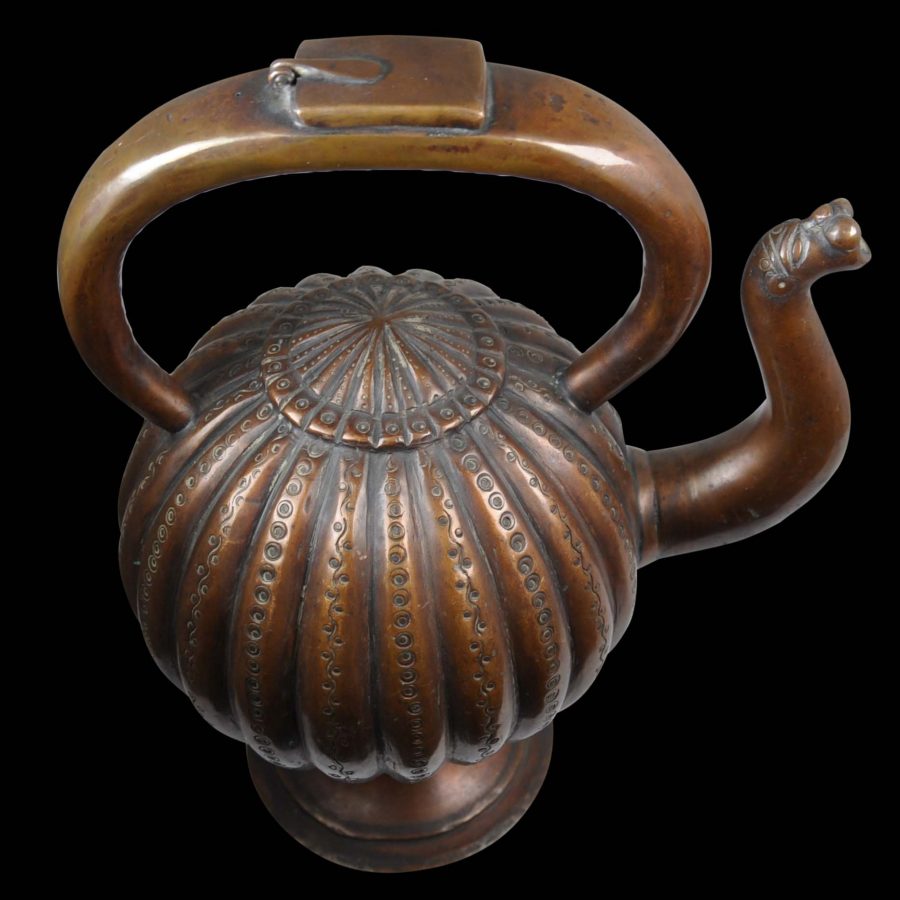This ewer is of cast, hammered and etched brass. The form is unusual – the melon-like spherical body is gadrooned and etched. It sits on a high, flared foot. The ‘S’-shaped spout has a zoomorphic terminal. The ‘C’-shaped handle is hollow. The most quirky aspect of this ewer is that the ‘lid’ in the top of the body is a false lid. It is for show only and is part of the cast design. The actual lid is at the top of the handle and it is from this that the ewer is filled.
Such a ewer is from northern India, but is based on earlier Persian prototypes. Other examples from India tend to be given dates as early as circa 1600 (see Zebrowski, 1997, p. 152-3 for example), but we prefer a more conservative dating for this example of 18th century.
The example here has a good chocolate-brown patina. It sits evenly without rocking, and is free of repairs. The lid at the top of the handle has a great deal of wear.
References
Zebrowski, M., Gold, Silver & Bronze from Mughal India, Alexandria Press, 1997.





